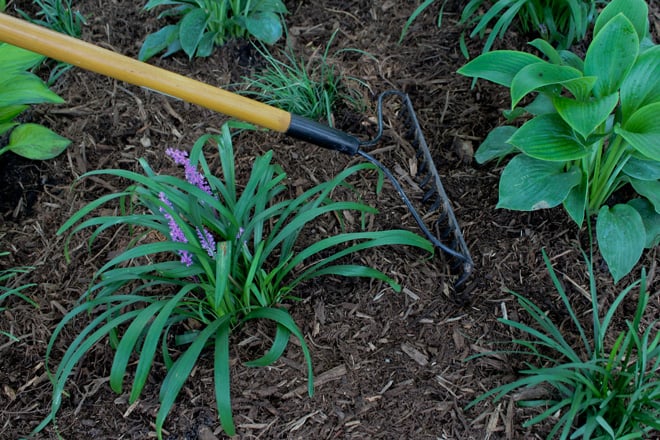
Contributor
- Topics: Archive, Sustainable Gardening

Take a good look at the soil in your garden. Turn over a shovelful and grab a handful. Good garden soil will be crumbly and easy to dig, have a sweet earthy aroma, and be a medium shade of brown. If your soil is hard to dig, doesn’t hold together in small clumps, smells sour, or is ghostly pale in color, then some proper amendment and cultivation will be in order.
A lab test can provide data on soil type, organic matter content, pH, and nutrient levels to guide what, if any, amendments are needed. This is especially valuable for large new plantings or when plants are failing. You can get more information at your local cooperative extension office or soil conservation district.
But you can learn a lot from examining a handful of soil.
A pinch of damp clay soil will feel smooth between your fingers; sandy soil feels gritty. This is an indication of its texture, the percentage of sand, silt, and clay particles. Clay soils hold moisture and are generally more fertile than sandy soils. Loamy soils strike a balance between the two, with good drainage and nutrient and moisture holding capacity. Soil texture is not readily changed.
Does your soil look crumbly and chunky? This is a clue to its structure—how well soil particles stick together in small clumps (aggregates) and how porous it is. Soil structure can be changed for better or worse. Over-tilling, over watering, working soil when it is wet, and heavy equipment will damage structure and cause compaction
Color gives you an idea of a soil’s organic matter content. Very pale or ashen soils indicate an absence of organic matter; higher levels show up as darker hues.

Here’s the Scoop
The simplest path to maintaining good garden soil is an annual application of compost and/or coarse organic mulch to replace organic matter that has decomposed and diminished.
Start as local as your own backyard. Composted leaves and worm compost, some of the richest materials available, contain loads of beneficial microbes and organisms well-matched to the “resident biome.” When buying soil products, choose local.
Screened composts and fine-textured amendments can be turned into or laid on top of the soil about an inch thick. Overloading the soil with compost can lead to a host of problems. If your soil is as dark as coffee grounds hold off on compost and apply a 2- to 4-inch deep layer of coarse-textured mulch, like wood chips or bark, on the surface of the soil.
Fertile amendments, often called soil conditioners, are a mix of composted manures and aged sawdust or wood shavings. These products, which can take the place of fertilizer, are good for soil that lacks organic matter and for growing heavy feeders like vegetable and seasonal flower gardens; the nutrient content will be listed on the label. Nutrient rich biosolids and manure based amendments also provide a strong boost to soil biology and are a good choice for restoring depleted, problem soils.
Horticultural coir derived from coconut husks has root-stimulating hormones and modest levels of nutrients. It is a superior choice over peat moss for amending soils.
For good soil with less work, shift to a no-till approach. Layering organic matter on the soil’s surface, like what happens in nature, leaves beneficial soil organisms undisturbed. This works for seasonal beds and is a must for permanent landscape plantings.
Christina Pfeiffer’s latest title, Pacific Northwest; Month-by-Month Gardening, will be released by Cool Springs Press in spring 2017.










Responses